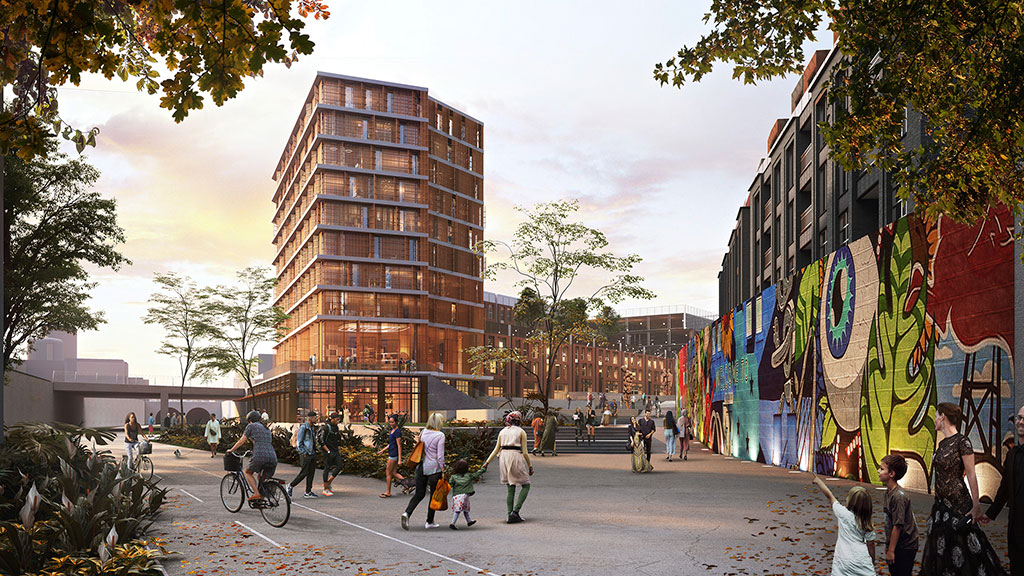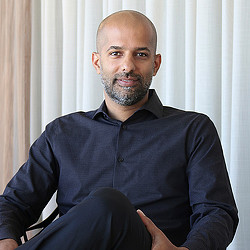Reframing Design Through the Lens of Restorative Justice
February 28, 2024 | By Tory Hereford, Peter Pendergrass, and Manan Shah
Editor’s Note: This research was conducted in collaboration with our external partners Designing Justice + Designing Spaces (Deanna Van Buren, Jean-Paul Zapata, Oretola Thomas, Garret Jacobs, Allison Wong, Brandie Mack) and Huckleberry Youth Programs (Yaneli Gonzalez). The Gensler research team includes: Bevin Yamazaki-Savage, Gray Dougherty, Karina Abu Eshe, Marc Pembroke, Rhea Butler, and Seth Orgain.
The concept of restorative justice is a set of practices and principles that center on accountability, community, and healing when dealing with conflict and harm. Restorative justice is most commonly seen today as an alternative to the traditional justice system, emphasizing non-violent communication between victims and offenders to collaboratively move forward from harm. Through restorative justice, victims and offenders are more likely to feel satisfied with the outcome of their situation.
The built environment plays an integral role in shaping societal development; its impact can both heal and harm communities. The process of gentrification may be traumatic to communities, and those who are most affected rarely have input into the ways their community is being changed. By engaging in principles of restorative justice from the outset of the design process, we can leverage the power of design to begin to dismantle inequity in our communities and cities.
The intersection of restorative justice and design.
As designers, restorative justice directly impacts communities and involves a variety of stakeholders. To understand what restorative design could look and feel like when applied to the design process, we reached out to expert practitioners, studied precedents, and developed a point of view for how we can design restoratively in the future.
As part of our research, we investigated possible opportunities to embed the principles of restorative justice into our process. A resource from the community-based nonprofit Huckleberry Youth Programs outlines three tiers of restorative justice: tier one focuses on building and strengthening relationships, tier two is about repairing relationships, and tier three addresses reintegration in society. As designers, our engagement with restorative justice falls primarily within tier one, building and strengthening relationships.
The purpose of efforts that fall within tier one is to lay a foundation of authenticity, trust, and care upon which positive relationships are solidified and restorative justice can occur when necessary. Having strong, established relationships within our communities facilitates a sense of trust from the outset of a project, as there is a strong understanding of those who will be most impacted by the work, their needs, and other measures of success.
A restorative justice mindset requires asking the right questions.
Through the lens of restorative justice, the role of the designer expands on problem solving to encompass facilitation and advocacy. Designers who work at the center of the process and interact with many stakeholders should seek to understand the different perspectives involved in the process and create a safe environment where all voices, needs, and aspirations are heard. The skill is to then synthesize the information into a coherent design strategy that attempts to address the needs of all stakeholders, especially those who will be most impacted by the end result.
To ensure the right information is collected, designers must ask the right questions. To develop a template question set, the research team consulted experts in the field, referred to existing case studies, and applied additional secondary research. These questions aim to highlight the principles and purpose of a project, and to establish impact from the outset.
- How might this project positively or negatively impact the surrounding community, and who would be most impacted?
- What voices are not being heard in the process of this project so far, and how will we invite them to the table?
- What local organizations could provide an important perspective regarding the potential impact of this project?
- What is the historical background of the site of this project, and how will we investigate and acknowledge that history?
- How could this project provide a sense of community, dignity for all people, and connection to nature?
Closing the loop requires iterative community engagement.
The ultimate goal of restorative design is to prevent harm and promote healthy communities. For example, the cycle of gentrification can have severely negative impacts on long-time residents, including displacement and financial stress. To minimize harm and build trust throughout the process, there needs to be continuous communication with community members and other stakeholders to ensure that everyone involved is heard and has a sense of agency in what is happening.
One of our research partners, Designing Justice + Designing Spaces (DJDS) created a toolkit to explore restorative design elements in a project. The toolkit is rooted in the values of restorative practices and philosophies that can be used to address specific projects. Part of the toolkit includes diagrams to represent relationships between complex social interactions and spaces, and a conceptual deck of cards used to explore design ideas with communities across cultures and language barriers. This is the type of resource designers can leverage in community engagement sessions.
Developing a practice of ‘restorative design.’
By incorporating principles of restorative justice into our practice as designers, we can begin to reframe the design process with a more human- and community-centered mindset, whereby designers work directly with those who are most impacted to minimize harmful outcomes and strengthen communities through design. To reiterate, this begins with building a foundation of relationships to facilitate open, honest dialogues and co-creation processes for new developments and other design projects in the future. At its core, restorative design should deeply consider those who are most impacted and their unique needs from the outset of a project.
Acknowledging past injustices and working to prevent future harm in our work is a crucial step we must take as designers. Gensler is progressively working to better understand our role in creating equitable cities. This research demonstrates how we can begin to infuse the philosophy of restorative justice into our work. We strive to avoid perpetuating cycles of harm associated with gentrification. We encourage all designers to leverage the key questions identified above, use resources like the DJDS toolkit, and start conversations with our clients. It’s up to all of us to take intentional steps to strengthen our communities, together.
For media inquiries, email .



